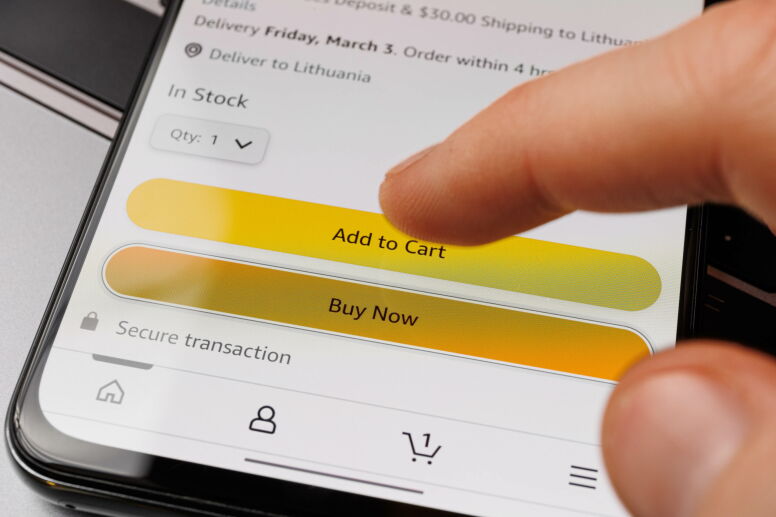News & Stories
When e-commerce platforms promote their own products

E-commerce giants like Amazon have long positioned themselves as neutral marketplaces, earning revenue by taking a cut from third-party sellers. But as these digital marketplaces promote their own brands and auction off top search slots to the highest bidder, their role has shifted.
They are now competing directly with the sellers they host.
Professor Fei Long of UNC Kenan-Flagler Business School digs deep into the commercial consequences of this shift in a new study. She asks what happens when platforms promote their own products in the most visible advertising slots.
Who wins, who loses — and does this strategy even make sense for the platforms themselves?
The starting point is straightforward: E-commerce platforms make far more money selling their own products than collecting sales commissions from outside brands. Amazon’s own-label products generated $8.1 billion in U.S. sales in 2020 — up 50% on the previous year — according to her study.
That figure does not include fees levied on third-party sellers.
Giving own-brand products prominent place on the site might seem like a no-brainer. But Long’s study shows this intuition often falls flat.
Promoting store-label goods in top advertising slots might lift their sales, but it comes at a cost: The platform forgoes ad revenue and selling fees it would otherwise earn from rival vendors.
Worse, it can make the whole marketplace work less efficiently.
One of Long’s more surprising findings is that even when a platform’s own products are priced lower than third-party alternatives, consumers can end up worse off. Giving the top search result to an own-brand means external vendors have less reason to cut prices, and the market does not grow as much.
By contrast, when rival sellers get top slots, they price more aggressively, drawing in more shoppers and expanding overall demand on the site.
“The illusion of choice hides a collapse in competition,” says Long. “The private label might be cheaper, but shoppers miss the bigger savings they never see.”
She conducted the study “Self-Preferencing in E-commerce Marketplaces: The Role of Sponsored Advertising and Private Labels” with Wilfred Amaldoss of Duke University’s Fuqua School of Business. It is published in Marketing Science.
The researchers built a theoretical model of an e-commerce platform, showing how independent sellers and homegrown brands compete for ad slots, tracking how sellers set prices and how shoppers respond.
Paradoxically, their results showed some third-party vendors actually benefit when platforms promote their own brands.
When a private label grabs the spotlight, it typically prices higher than an independent seller would in the same position. That means the seller who loses the ad slot keeps more of their customers, and can end up earning more than expected, despite not winning the auction.
“It’s a twist that flips the usual narrative: platforms aren’t always the enemy of their sellers,” Long says.
The catch? This upside applies only to the seller who would have lost the ad slot anyway. The seller who would have won — and seen a sales surge — loses out, because the platform takes that digital real estate for itself.
Long’s research shows the trade-off gets harder when platforms try to promote their own products and sell ad space at the same time.
There are moments when private labels and ad slots can work in tandem. If the platform can adjust the fees it charges sellers, it might use its own-brand products to soften price competition, while still generating revenue from advertising.
But these conditions are narrow, requiring high commission rates, fairly effective ads and steady demand from consumers. “Most of the time, the two strategies pull in opposite directions,” Long says.
So what should the e-commerce giants do? The researchers say it depends.
If seller fees are high or ads successfully boost demand, it is often better for the platform to let outside brands take the top slot. That keeps prices competitive and grows the overall market.
But when ads do little to drive demand or outside competition is weak, it can make more sense to promote the platform’s own products, even if that means giving up ad revenue.
“What really matters is how price-sensitive the shoppers are, and how easily the sellers can walk away,” Long says.
This research lands at a moment when regulators are paying close attention to how platforms like Amazon treat their own products. In both the U.S. and Europe, lawmakers have raised concerns that tech giants are giving their in-house brands unfair advantages, like top slots in search results.
The fear is that this kind of self-preferencing distorts competition, pushing out independent sellers and narrowing consumer choice. Amazon argues the opposite: Private labels bring lower prices and more variety.
But the bigger question remains unresolved: can a platform be both a neutral marketplace and a competitor on that same marketplace?
Long and Amaldoss don’t settle that debate. But their findings make one thing clear: Self-preferencing is not always good business. Platforms might win a sale by pushing their own products to the top, but they risk shrinking the very market they rely on.
Sometimes, the smarter move is to let competition do its job.